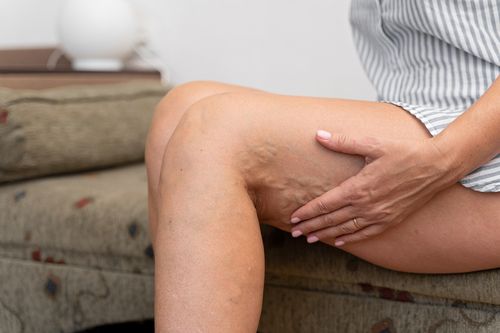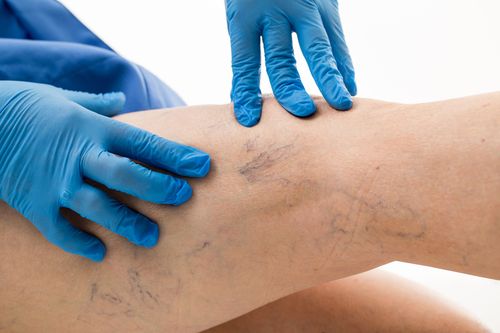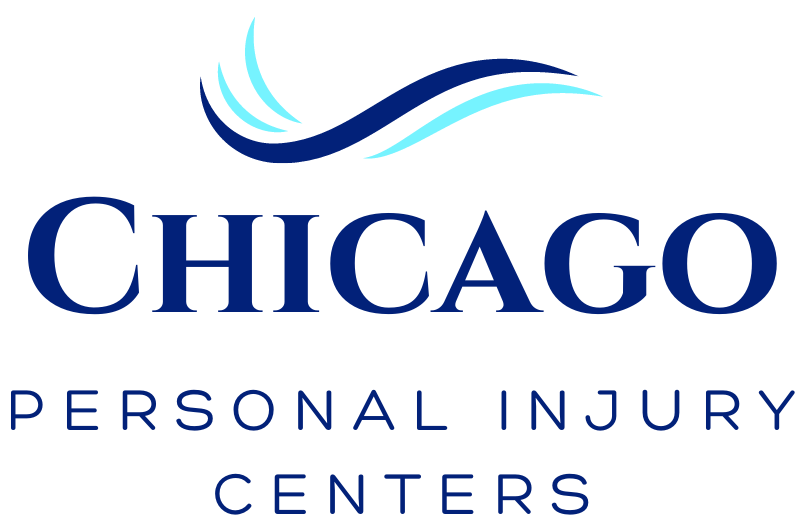Spider and varicose veins are common vascular conditions that affect nearly half of the population in the U.S., with women being disproportionately affected. It is estimated that up to 55% of women will experience these conditions at one point in their lifetime compared to 45% of men.
While many people generally view them as a cosmetic issue, spider and varicose veins can cause symptoms such as pain, swelling, and discomfort. Moreover, they can be sign of an underlying health issue that needs to be addressed by a professional health provider.
If you are struggling with spider or varicose veins, our advanced treatment options for vein diseases at Chicago Personal Injury Treatment Center can help restore your appearance while addressing the underlying causes. Don’t hesitate to call us at (773) 482-5800 to schedule an appointment.
Understanding Spider and Varicose Veins
Spider veins and varicose veins are two different conditions that affect the veins in the body. Spider veins are damaged blood vessels appearing just beneath the skin’s surface. They manifest as thin lines or spider webs and are usually red or blue in color. Spider veins are smaller than varicose veins and typically occur on the legs and face. They are mainly a cosmetic concern, meaning that they don’t pose a threat to your health.
Varicose veins, on the other hand, are enlarged, twisted veins that bulge just under the skin’s surface. They usually appear on the legs, feet, and ankles and are often blue or dark purple in color. Unlike spider veins, varicose veins are problematic and may cause symptoms such as aching, pain, and swelling.
Underlying Causes For Spider and Varicose Vein
Both spider and varicose veins are the result of issues affecting the valves in the veins. When these valves become weak or damaged, blood can pool in the veins, causing them to become enlarged and visible.
The primary causes of these issues are usually related to genetics, age, gender, and lifestyle factors that affect the health of the veins and their valves. However, accidents and injuries can exacerbate or accelerate the development of spider and varicose veins.
Accidents or injuries that directly impact the legs or face can damage veins or their valves. This damage can disrupt the normal flow of blood, leading to the development of spider or varicose veins. Also, prolonged immobility caused by an injury can increase pressure on the veins, leading to weakened veins.
What Are Some of the Causes and Risk Factors for Spider and Varicose Veins?
- Trauma or injuries – Trauma or injuries resulting from accident, like slips and falls, car accidents, etc., to the veins can damage the vein walls or valves, disrupting the normal flow of blood. This can contribute to the development of both spider and varicose veins, particularly in the affected areas.
- Prolonged sitting or standing – Immobility can lead to poor circulation and increased pressure in the veins, which may result in varicose veins. Jobs that require extended periods of sitting or standing or injuries that require prolonged periods of rest significantly increase the risk of developing spider and varicose veins.
- Genetic predisposition – Genetics are key factors in the development of spider and varicose vein. Traits that affect vein health can be passed on from one generation to another.
- Hormonal changes – Hormonal fluctuations that typically occur during puberty, pregnancy, and menopause can increase the risk of developing spider and varicose veins.
What Are the Signs and Symptoms of Spider and Varicose Veins?
Spider and varicose veins manifest themselves in different ways. Here are some common symptoms:
- Visible clusters of veins on the skin
- Spider veins appear as small, web-like clusters of red, blue, or purple veins just beneath the skin’s surface. Varicose veins, on the other hand, appear as twisted or bulging veins and are larger than spider veins.
- Swelling and discomfort
- Swelling and discomfort are common symptoms of varicose veins.
- Itching and burning sensation
Varicose veins can lead to an itching and burning sensation in the area above the affected vein. Even though spider veins are primarily asymptomatic, some people may experience mild itching or burning sensations in the areas where the veins are visible.
What is the Importance of Professional Assessment for Spider and Varicose Veins?
Seeking professional medical evaluation for spider and varicose veins is crucial to accurately diagnose the type and severity of your vein condition. This is especially important after an injury. Trauma can cause damage to veins and valves in the affected body part, potentially increasing the risk of developing or worsening spider and varicose veins. A professional can evaluate this risk and recommend appropriate preventive measures or treatment options.
At Chicago Personal Injury Center, we recognize the importance of conducting proper and thorough evaluations before commencing the treatment phase. We have a team of experienced specialists who are skilled in accurately diagnosing and treating vein conditions.
We conduct comprehensive evaluations of our patients’ vein health, taking into account their medical history, symptoms, and any recent injuries that may have affected their veins. Our facility is also equipped with advanced diagnostic tools, such as ultrasound imaging, to assess your vein condition more accurately.
Once we’ve diagnosed your condition, we will put you on an appropriate treatment plan tailored to your unique needs.
What is the Diagnostic Process for Spider and Varicose Veins?
Our advanced diagnostic process for spider and varicose veins typically involves a number of crucial steps:
Medical history review
Your healthcare provider will start by reviewing your medical history, including any family history of spider or varicose veins. They will also inquire about your symptoms, including when they started. Information about your overall health, medications, and past medical conditions will also be considered in your diagnosis.
Physical Examination
A physical examination is an essential part of the diagnostic process. A healthcare provider will carefully examine the affected area, looking for visible signs of spider or varicose veins.
They may also palpate the area to check for tenderness or swelling. You may also be asked to perform certain actions for them to observe changes in your vein appearance and any associated symptoms like swelling or discomfort.
Doppler Ultrasound
Doppler ultrasound is a non-invasive imaging technique used for assessing the extent and severity of spider and varicose veins. It uses sound waves to create images of your veins and the blood flow within them. It allows healthcare professionals to visualize the veins beneath the skin’s surface, assess the direction of blood flow, and identify any abnormalities in vein structure or function.
What Are Some Tailored Treatment Approaches for Spider and Varicose Veins?
Our team will craft an appropriate treatment plan based on the type and severity of your condition. Here are some common treatment options for spider and varicose veins:
- Sclerotherapy: This is a minimally invasive procedure that involves injecting a solution directly into the affected vein, causing it to collapse and eventually fade from view.
- Adhesive ablation: This is a minimally invasive procedure that involves injecting a medical adhesive into the affected vein, sealing it shut and rerouting blood flow to healthy veins.
- Radiofrequency Ablation: This is a minimally invasive procedure that uses heat generated by radiofrequency energy to close off the affected vein.
- Varithena: This is a minimally invasive procedure that involves injecting a foam solution into the affected vein, causing it to collapse and eventually fade from view.
What Are the Benefits of Timely Treatment?
Seeking timely treatment for spider and varicose veins is crucial to prevent the condition from worsening and to improve overall health and well-being. Here’s a brief look at why you should seek treatment as soon as possible:
Alleviation of discomfort and pain
One key benefit of seeking timely treatment is getting relief from the discomfort and pain associated with varicose veins. Varicose veins can cause aching, throbbing, and a feeling of heaviness in the legs. Early intervention can significantly reduce these symptoms, improving your overall quality of life and comfort.
Improved appearance of affected areas
Spider veins and varicose veins can be unsightly, and many people feel uncomfortable and embarrassed about their appearance. Timely treatment can lead to a noticeable improvement in the appearance of the affected areas.
Prevention of potential complications
If left untreated, varicose veins can lead to more serious complications, including venous ulcers, chronic inflammation, and the formation of blood clots. Seeking treatment can prevent these complications from developing or worsening, reducing the risk of more severe health issues.
What Does Rehabilitation and Recovery Look Like for Spider and Varicose Veins?
Although recovery from treatment for spider and varicose veins is generally well-tolerated and most patients experience minimal discomfort and a relatively quick return to their normal activities, post-treatment care and rehabilitation are essential to ensure optimal recovery and long-term vein health.
We provide post-treatment care and rehabilitation to:
- Minimize discomfort after treatments like sclerotherapy or ablation procedures
- Minimize the risk of complications, for example, by monitoring the treated area for signs of infection or unusual swelling
- Monitor your progress, addressing any arising issues promptly
- Instill lifestyle changes that support vein health through education and guidance
Rehabilitation and recovery for spider and varicose veins are important steps in the treatment process. Chicago Personal Injury Center is here to help you navigate this journey, providing the guidance, care, and expertise you need to achieve optimal recovery and maintain healthy veins.
Should I Seek Legal and Insurance Support
If you’ve suffered spider or varicose veins resulting from accidents or injuries, there may be some legal and insurance considerations to take into account:
- Insurance coverage: Most insurance companies will cover the treatment of varicose veins if it is deemed a medical necessity, which includes venous insufficiency and pain. However, the treatment of spider veins is often considered cosmetic and may not be covered by insurance unless there is an associated medical condition
- Legal considerations: If your spider or varicose veins are the result of an accident, there may be legal considerations to keep in mind. For example, if the accident was caused by someone else’s negligence, it may be possible to pursue compensation for medical expenses and other damages.
Navigating these aspects can be quite challenging. However, at Chicago Personal Injury Center, our services extend beyond providing top-notch care and treatment. We also offer guidance, legal referrals, insurance coordination, and advocacy. We’re here to support you throughout the treatment and recovery process, including the legal and insurance aspects.
Call Our Offices Today for the Best Chicago Spider and Varicose Treatment!
If you are suffering from spider or varicose veins, it is important to seek professional evaluation and treatment to prevent the condition from worsening and to improve your overall health and well-being. At Chicago Personal Injury Center, we are committed to providing patients suffering from spider and varicose veins with comprehensive medical evaluations and personalized treatment plans to address their specific needs and goals.
We have a team of highly-skilled vein specialists and other professionals who work together to ensure the best standards of care for our patients. We are also well-equipped with advanced medical technology for accurate diagnosis and effective treatment. Call us today at (773) 482-5800 to get started on your recovery journey.


